Winter cameos with Heather Angel
Winter Cameos by Heather Angel
CHINA
All my overseas trips where I work on my own, are planned like a military exercise. Information is gleaned about the best places and best time to see specific animals or plants. Mean monthly temperatures are noted for selecting suitable clothing for each location. However, we all know weather and wildlife are two highly unpredictable elements when arrangements have been made months in advance.
After a few trips to China with small specialist groups following in the paths of the plant hunters, I began to understand the system and felt confident enough to plan my own trips with a driver and an English-speaking guide. Knowledgeable guides are key to the success of any trip, although often the places I visit are off the beaten track, which they may not have visited before.
My first visit to photograph ancient terraced rice paddies in Yunnan was disappointing because cloud covered the rising sun on three consecutive days, so I resorted to taking mainly macro shots.
Sun transforms winter scenes by adding colour to water and ice early and late in the day. Years later, I returned and was rewarded with a clear sky as the sun rose on the first morning painting the flooded paddies with gold.
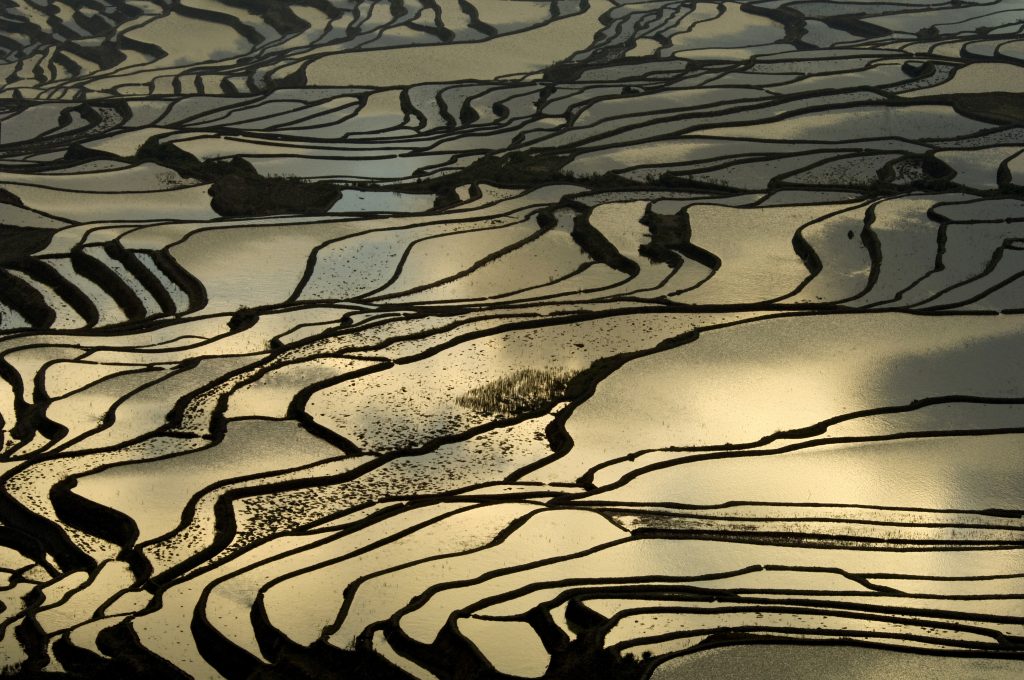
China has grown rice for 3,000–4,000 years; not always on flat ground. Part of the famous ancient 1,300-year-old Chinese rice terraces known as Yuanyang in Yunnan province, is now the 45th World Heritage site in China. These terraced rice paddies are cultivated by the Hani Minority people. From mid-September until mid-November, depending on the elevation, the terraces are filled with water ready for planting in April.
Dawn is the best time to photograph part of the expansive terraced area. As the nearest hotel was 30 minutes’ drive away, my guide, driver and I rose whilst it was still dark to reach the viewpoint overlooking the terraces. Gingerly I walked down a slope carrying my gear, using a head torch to spot any pitfalls on the way. Only when the first rays of light began to fall on the terraces could I work out which was the best lens to use. It turned out to be the Nikon 80-400mm f4.5/5.6 VR set at 110mm. I was so engrossed in rapidly working the limited time slot, I did not fully appreciate how many Chinese photographers had arrived whilst it was still dark. After the best light had passed, many were curious to discover what gear I was using as the sole female with a tripod. They converged to check out my gear, approving my Nikon with raised thumbs.

I had travelled from Chengdu, the capital of Sichuan, to Wolong NNR in the Minshan Mountains, lying at the foot of the Tibetan Plateau, this is the largest and best-known of the giant panda reserves. As I walked up the mountain searching for places where pandas may have been feeding, I passed a small waterfall no longer flowing with an accumulation of icicles encapsulating a bamboo plant.
Giant pandas were originally carnivores that gradually changed to a more leisurely herbivorous way of life. They will eat several kinds of wild plants, but bamboo now makes up more than 99 per cent of their diet. Unlike brown bears, pandas do not hibernate in winter because bamboo does not provide enough energy to see them through the coldest season.
This is an example of an unexpected image than can be used to change the pace in an article about giant pandas.
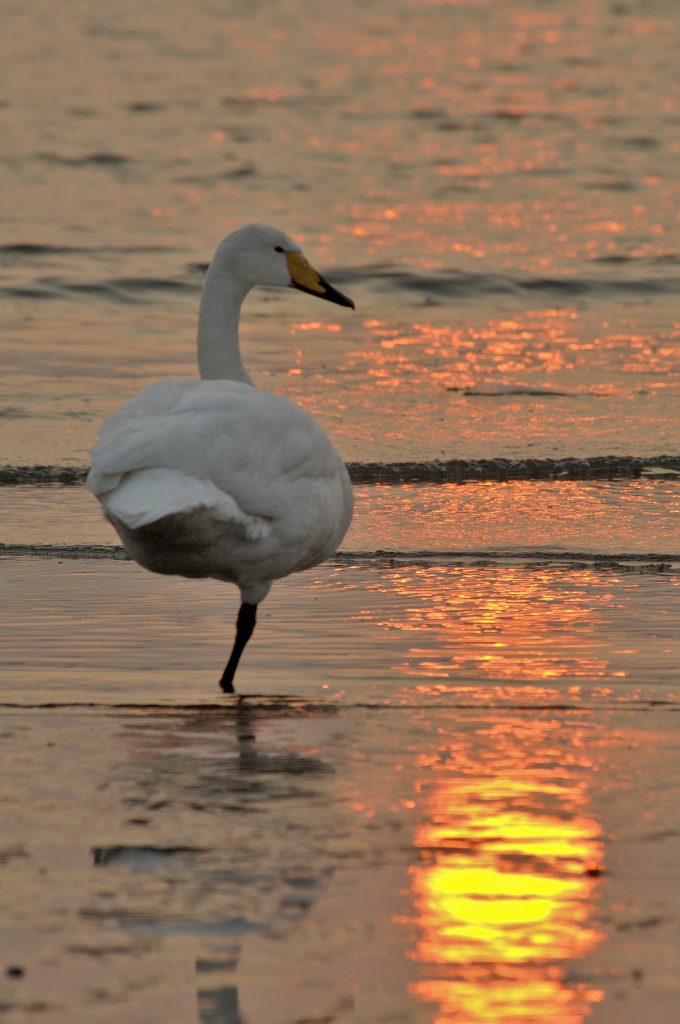
Every year, thousands of wildfowl fly south from Xining and Siberia to converge on Rongcheng Swan Nature Reserve to overwinter. The whooper swan population plummeted from 6,000 in 1990-1993 down to just 300-400 in 2000, mainly because part of a lake completely dried up due to construction work. Fortunately, the population has since increased, largely due to the restoration of the lake and the upgrade to a National Nature Reserve.
Whilst waiting for the swans to fly into their roosting area at dusk, I spotted this loan swan standing on one leg with the setting sun reflected in the shallow water.
USA – YELLOWSTONE
Providing you are well kitted out for working at sub-zero temperatures, Yellowstone in winter offers great photo opportunities. Wherever I work, I have prime targets for the day or the trip. In Yellowstone, they are larger mammals within a snow-covered landscape.
Should a landscape be blotted out by low cloud, wildlife fail to appear or fail to show interesting behaviour, then I switch to plan B. Driving along roads, or walking along tracks, I periodically stop to scan the wider view, homing in on winter cameos preferably including snow, ice or frost for a typical winter image that works for a calendar or a greetings card. This selection, discovered over the years in five different countries, were all taken using a tripod and most with a BH-55 RRS ballhead.
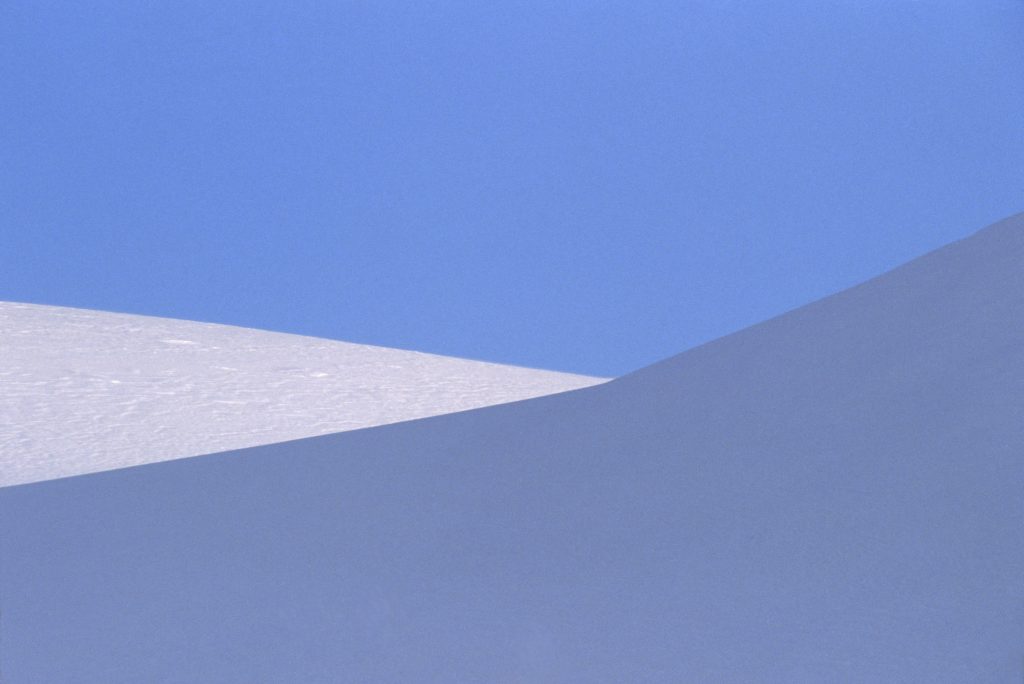
This portion of a winter landscape includes blue sky, sunlit white snow on one side and a darker shadow area on the other. It could not be simpler and is a prime example of a frame that has bags of negative space for overprinting.
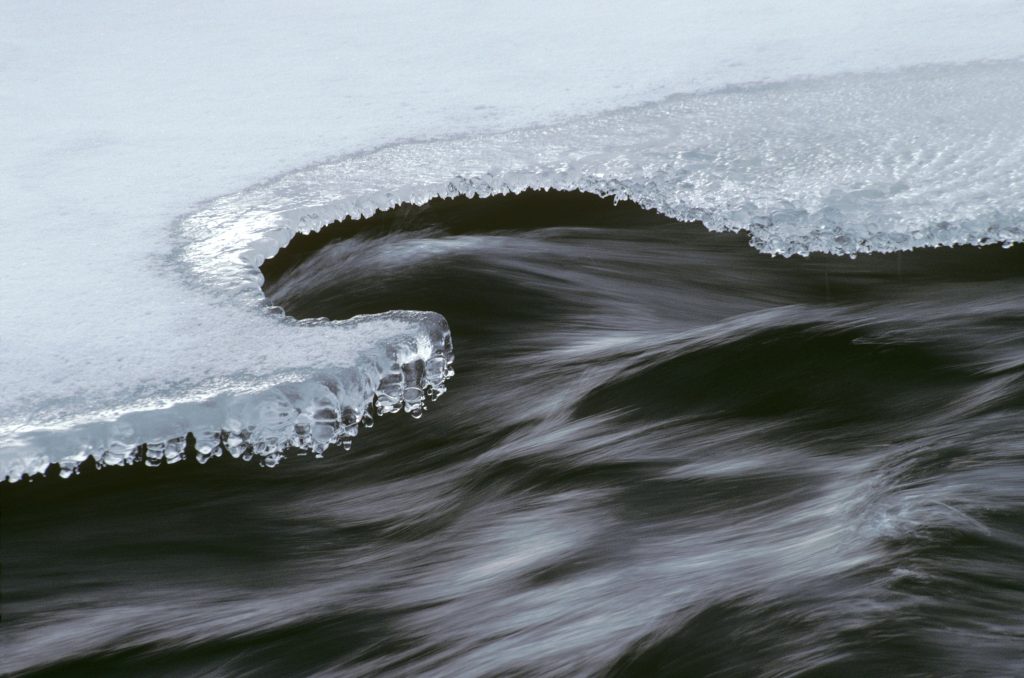
Another Yellowstone shot shows the margins of a creek where fluctuating temperatures resulted in snow melting by day only to form stubby icicles along the edge of the ice platform at night. A low ISO was selected so a one second exposure could be used to blur the moving water in contrast to the solid undulating icicle fringe

There was not much choice about how to frame lone this pine tree, as the powerful sun had to be largely hidden behind the trunk or branches of the pine, so it did not burn out a larger area.
CANADA
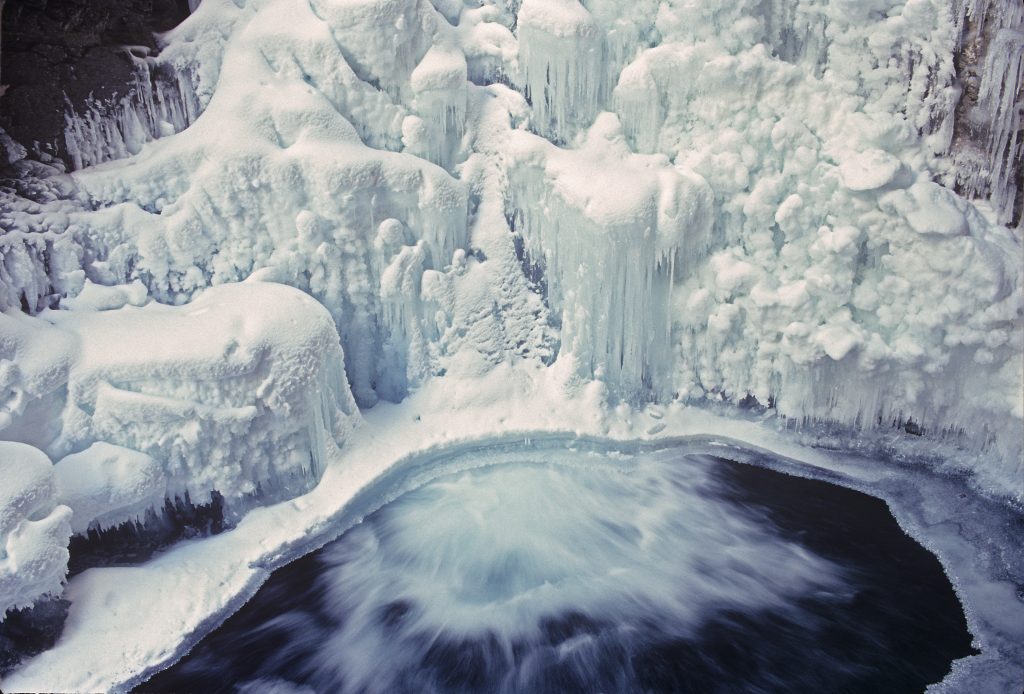
In Canada’s Banff National Park, Alberta, the frozen surface of Lower Falls within Johnston Canyon caught my eye as the water flows beneath the snow-capped icy façade to appear in the plunge pool below.
ICELAND
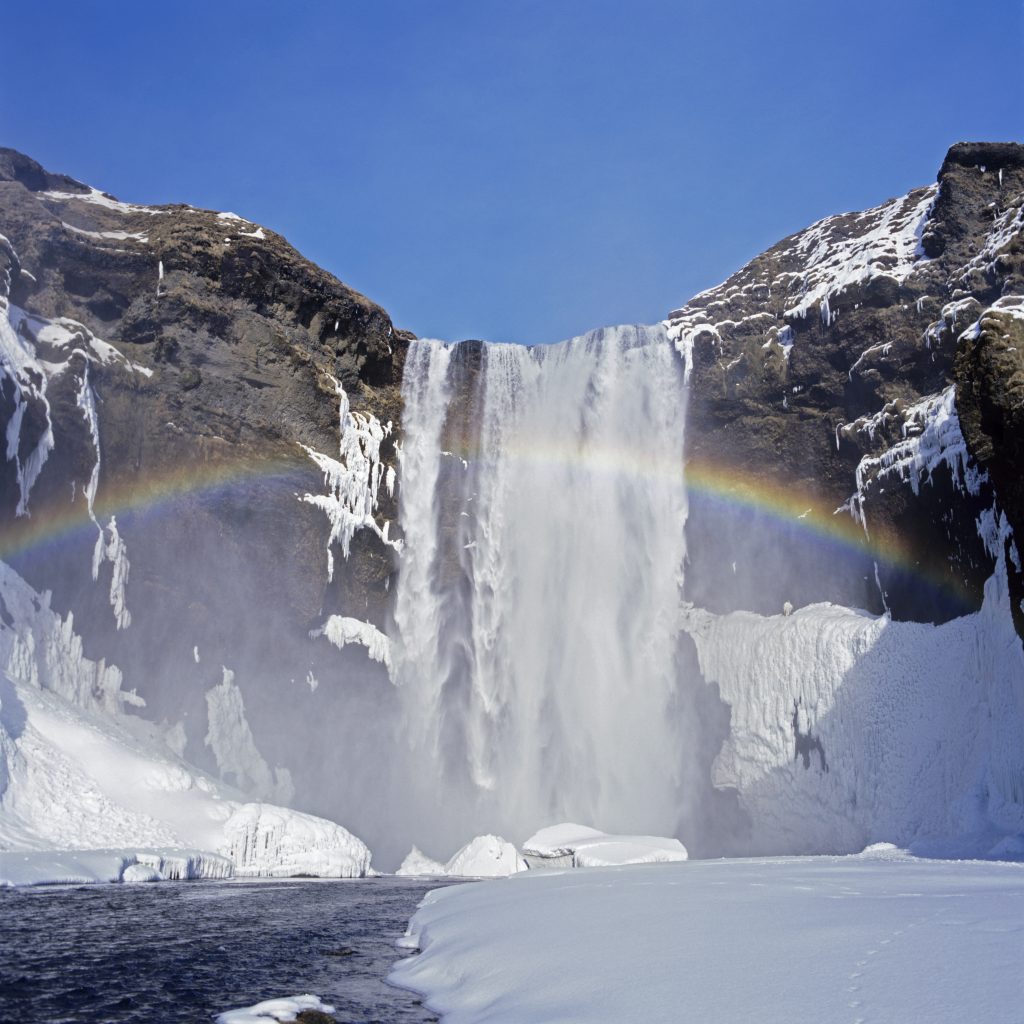
Iceland has many easily accessible waterfalls. I invariably visit in the summer to spend time with some of over 5 million puffins that inhabit the main island and smaller offshore islands, when the falls are flowing. During a March trip I reached Skogafoss when the sun was low in the winter sky and was rewarded with a complete rainbow across the wide curtain, which enlivens the scene with snow-covered icicles on the rock face and the snowy expanse below.
ENGLAND
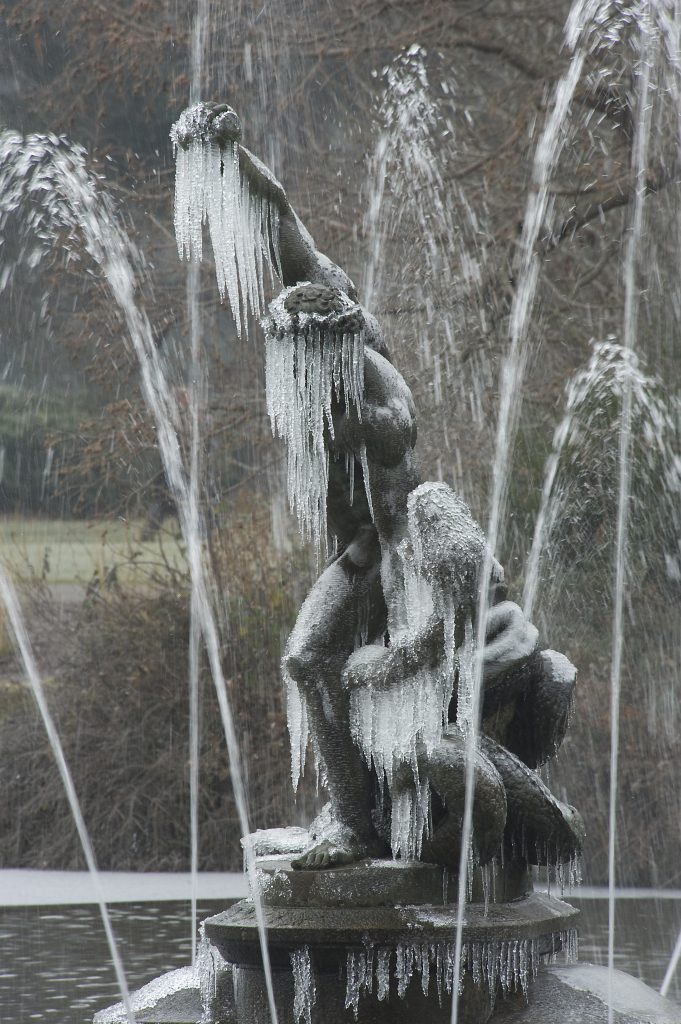
Whilst working on a book about the wildlife at Kew Gardens, I spotted the Hercules and Achelous fountain that plays throughout winter to prevent ice forming on the Palm House Pond. This ensures the birds have a water source for drinking in cold spells. Sure, this is not a wilderness cameo, but you don’t see dreadlock icicles every day.

Common reed beds, which can reach 3 metres in height, provide shelter and a home for many birds. The reeds are also used for thatching buildings. For most of the year they don’t motivate me to set up a camera; but I could not pass by these magical heavily frosted stems, leaves and seed head. For this shot I chose a square format on a Hasselblad.
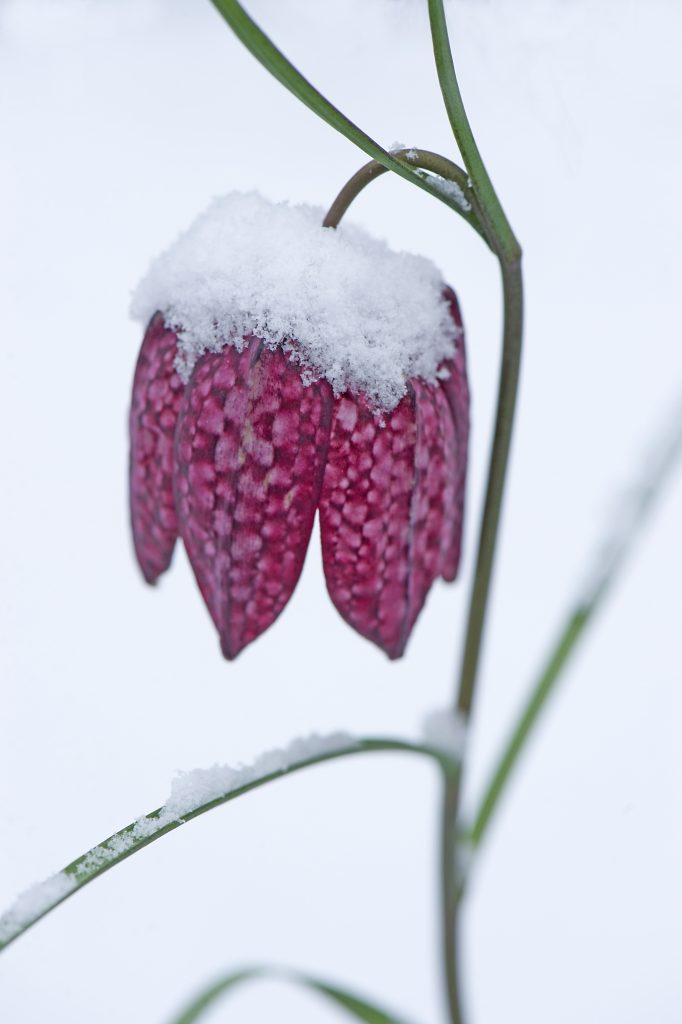
We rarely get much snow in southern England, so when it was forecast last winter, I bought a few colourful early spring flowers, placing the pots on a garden table. After it began to snow early in the morning, I periodically captured the snow building up on a snake’s head fritillary flower, knowing it could all be gone by a sudden gust of wind. Sure enough, shortly after this frame was taken, the next time I ventured out most of it had been blown away.
Cameos are everywhere, just waiting to be discovered (or helped to create!) amongst the broader landscape.
GEAR
Cameras:
various Nikon including D3, D4. Hasselblad
Lenses for these images:
Nikon: 80-400mm, 200-400mm
Micro-Nikkor 105mm/f2.8
Hasselblad 80mm
RRS Gear:
BH-55 Pro with B2 Pro II Clamp
BD-4L: L-Plate
BD800-L: L-Plate
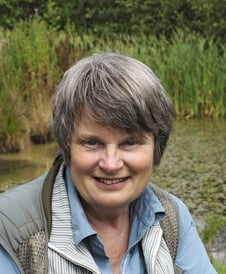
Based in Britain, Heather Angel worked as a marine biologist before becoming a peripatetic wildlife photographer, visiting every continent, with 32 trips to China alone. Heather’s enthusiasm for the natural world is evident via her talks, workshops and prolific writing – her 60th book Pollination Power appeared in 2015. Commissions range from the 1987 Kodak Thames calendar to portraying the biodiversity of the Himalaya for the British Council. Major solo exhibitions have been staged in Kuala Lumpur, Cairo, Beijing and in London at the Science and Natural History Museums. Heather’s work has been recognised by an honorary DSc from Bath University (1986) and as the 1998 Louis Schmidt Laureate by the BioCommunications Association of USA. She has been a Visiting Professor at Nottingham University since 1994.
For more information, visit Heather’s blog site http://heatherangelphotography.co.uk/
